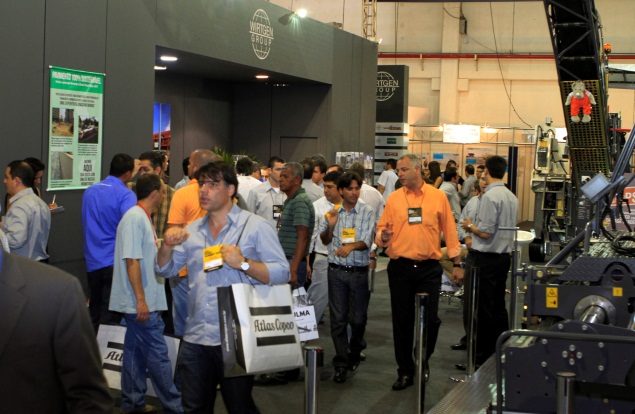
Most of the value is designated for construction, restoration and safety projects on the Brazilian federal highways.
 The general director of Brazilian National Department of Transport Infrastructure (DNIT), Jorge Fraxe, announced that the federal government investments in roads through June 2013 is expected to reach R$ 16 billion, mostly in construction, restoration and safety projects on federal highways. And it is in this recovery scenario that the market does the countdown for the third edition of Brazil Road Expo, the only event 100% focused on segments of paving and road and highway infrastructure, which will take place from March 19 to 21, 2013, in São Paulo, Brazil.
The general director of Brazilian National Department of Transport Infrastructure (DNIT), Jorge Fraxe, announced that the federal government investments in roads through June 2013 is expected to reach R$ 16 billion, mostly in construction, restoration and safety projects on federal highways. And it is in this recovery scenario that the market does the countdown for the third edition of Brazil Road Expo, the only event 100% focused on segments of paving and road and highway infrastructure, which will take place from March 19 to 21, 2013, in São Paulo, Brazil.
According to Fraxe, DNIT’s goal is to have all 58 thousand kilometers of the extension of the federal grid covered by structured maintenance contracts, by December of this year. “It is good to remember that this kind of maintenance is more than simply covering holes”, he remembered. The predicted services are more wide-ranged, including functional and structural recovery of the pavement, increasing comfort for the users.

In figures, the forecast is that by the end of this year, including competitions launched since August/12, an additional $ 13 billion in works will be tendered. Among them, 1,869 km of doubling and another 5,339 km of paving and restoration projects. By June 2013 the tendering of an additional R$ 3.5 billion for duplication projects and construction of 630 km is expected.
Among the large projects that will be tendered this year are the duplication of BR-381 between Belo Horizonte and Governador Valadares and of BR-116 in Rio Grande do Sul. He emphasized BR-Legal, the new highway signaling project that will also be tendered soon. “Approximately R$ 4 billion over 5 years will be invested to ensure safety and good signage on federal highways, “said the Director. BR-Legal will also invest in installing plaques with tourist orientation (anticipating the big events like the World Cup 2014), and in the installation of metal fenders on winding stretches.
Jorge Fraxe recalled that the construction work is gaining agility, thanks to RDC – Differential Procurement Regime [Regime Diferenciado de Contratação]. With RDC, the deadline for bidding is just one month. In normal cases, competition may last up to 200 days, he said.
For Guilherme Ramos, director of Brazil Road Expo, this is the time for Brazil to invest in qualified technology and manual labor in order to meet the demands of the work that lies ahead. “With the amount of investment and the need for projects to be carried out on the highways of our country, we need more than ever to prepare for the resumption of Brazilian infrastructure. For all this, the third edition of Brazil Road Expo will take place at the ideal time for governments to invest qualification of processes and people so that they can accomplish everything that needs to be done in Brazil, with regard to road and highway infrastructure,” he highlights.
BEM – According to the Director, the new times go beyond the total of investments and quality of the services in execution. He announced that starting on the next 18th, the DNIT site will have available access to the measurement bulletins of the projects executed. At the first moment, BEM – Electronic Measurement Bulletin [Boletim Eletrônico de Medição] will supply, online, the information in reference to the physical execution and payment made of the 107 project contracts. The intention is to give transparency to all the projects executed by the Autarchy, so all citizens can help in inspecting the services.
Source: Brazil Road Show News Room
Tags Brazil Road Expo News
 Constructionshows
Constructionshows